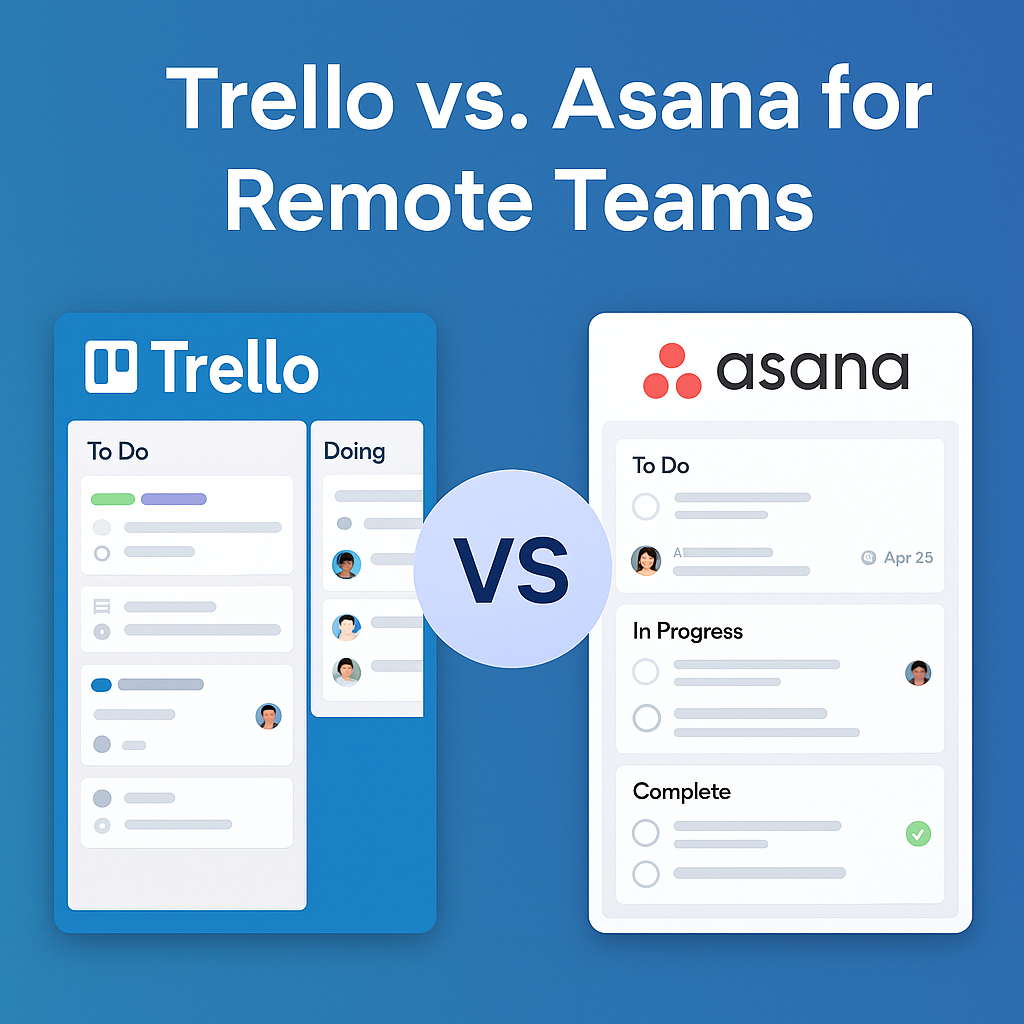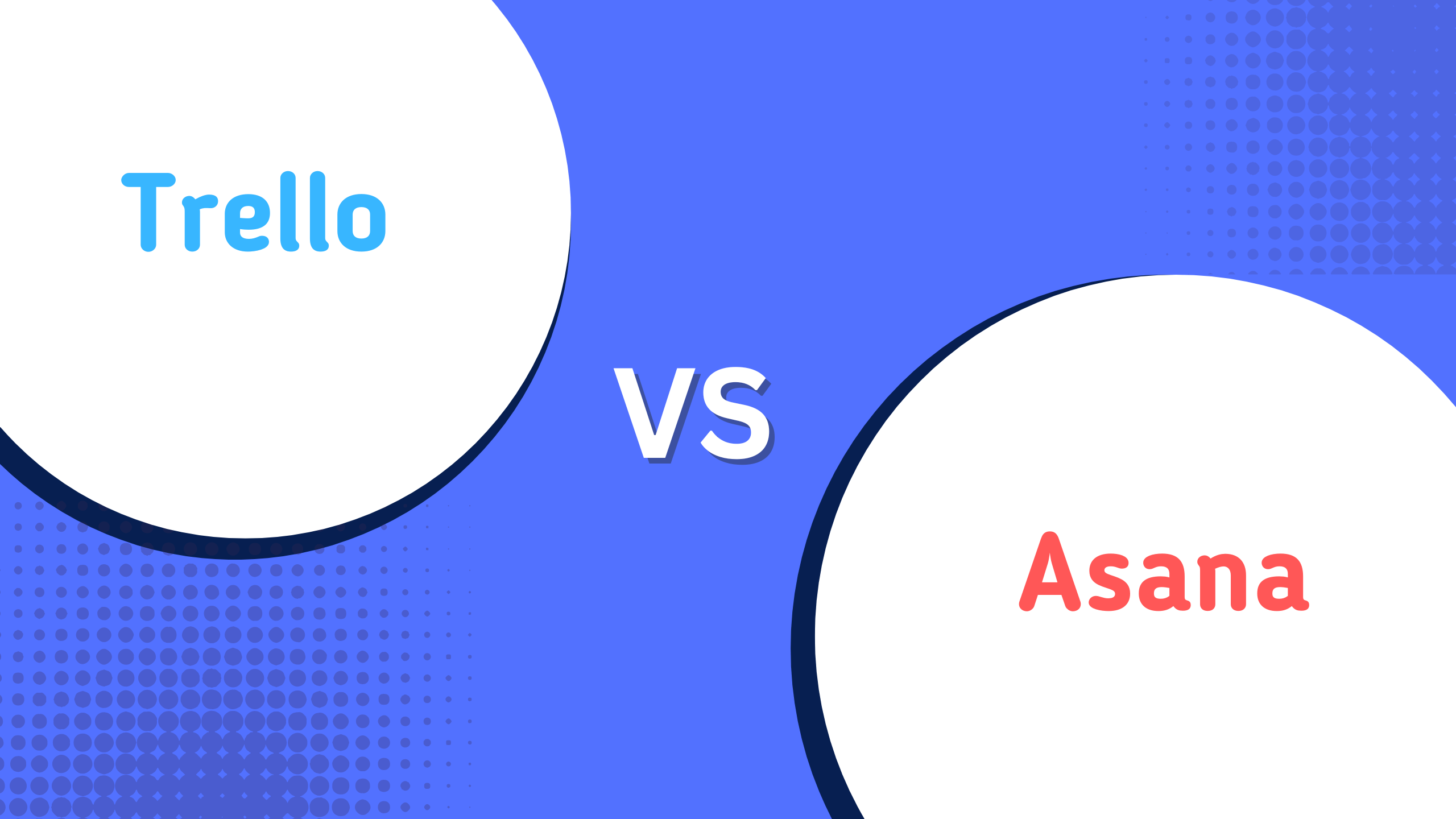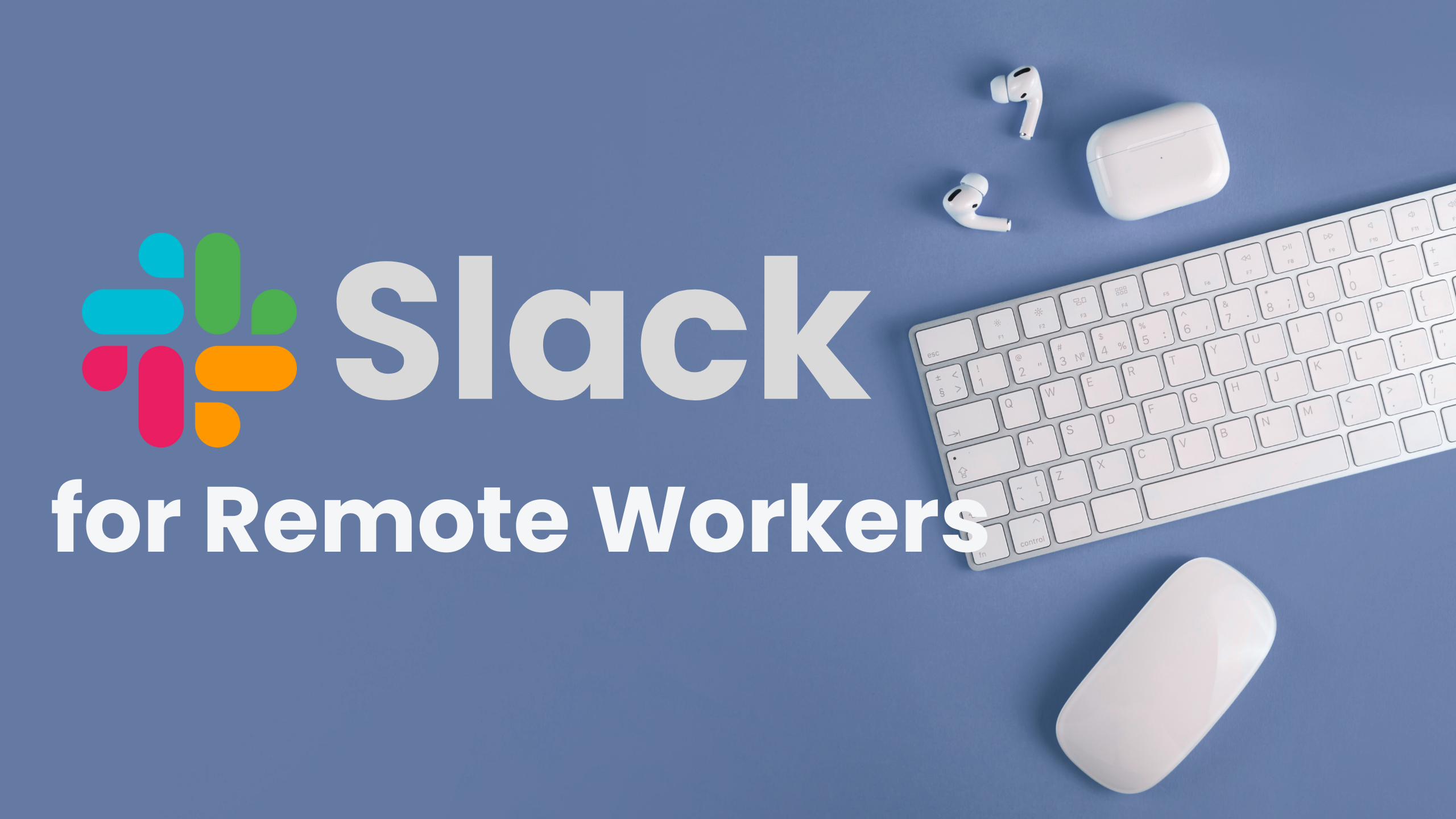As more companies embrace hybrid and fully remote models, finding the best project management tool for remote collaboration has become a top priority. Teams working across different time zones and locations need more than just a to-do list they need a centralized system to manage tasks, track progress, and maintain seamless communication. That’s where the debate between Trello vs Asana for remote teams becomes especially relevant.
Among the wide array of tools available, Trello and Asana consistently stand out for their functionality and user experience. While both platforms promise to streamline workflows and boost team productivity, their approaches to project management differ in significant ways. As companies adopt hybrid and remote-first models, the demand for intuitive, scalable, and remote-friendly software has intensified bringing us to the ever-relevant comparison: Trello vs Asana for remote teams.
But this isn’t just about picking a tool. It’s about finding a solution that fits your remote team’s communication style, workload structure, and long-term goals. From asynchronous task tracking to real-time collaboration, the stakes are high and choosing the wrong system could cost you hours of productivity each week.
While both tools are powerful in their own right, they cater to different styles of work. Some remote teams thrive with visual Kanban boards, while others need structured workflows, task dependencies, and in-depth reporting. The challenge isn’t just selecting a popular platform it’s choosing one that aligns with your remote team’s communication patterns, workload distribution, and productivity goals.
In this article, we’ll break down what sets these tools apart, especially in the context of remote team productivity tools. If you’re wondering whether Trello or Asana is better for distributed teams, you’ll get a clear, data-driven answer that considers ease of use, flexibility, automation, integrations, and overall value.
Whether you’re managing client projects, sprint cycles, or internal operations remotely, this guide will help you confidently choose the right platform to keep your team aligned and productive no matter where they are in the world.
Trello vs. Asana for Remote Teams: Which is Best for You in 2025?
As remote work continues to surge in popularity, teams across industries are rethinking how they manage tasks, collaborate, and stay organized. Two major players in this space Trello and Asana often lead the conversation. But when it comes to the real question Trello vs Asana for remote teams, which one truly stands out?
In this detailed comparison, we’ll break down their strengths, weaknesses, pricing, user experience, and how they cater to remote work culture. Plus, we’ll offer some actionable tips and external resources to help you make the most informed choice.
Why the Right Project Management Tool Matters for Remote Teams
According to a 2024 study by Buffer’s State of Remote Work, 86% of remote workers say they experience improved productivity, but 41% cite communication and collaboration as major challenges. Choosing the right project management platform is essential to bridging that gap.
Trello : Why Trello Works So Well for Remote Teams
Trello is a Kanban-style visual collaboration tool developed by Atlassian. It’s known for its simplicity and drag-and-drop interface.
🔑 Key Features
- Boards, Lists, and Cards structure
- Built-in Butler Automation
- Integrations with Slack, Google Drive, Zoom, and more
- Power-Ups to expand functionality (calendar, timelines, reporting)
✅ Best For:
- Small to medium remote teams
- Visual thinkers and creatives
- Task-based workflows
Remote work introduces a unique set of challenges from keeping track of tasks across time zones to maintaining transparency without endless Zoom calls. That’s where Trello for remote teams stands out as more than just a task board it becomes a shared workspace that’s both lightweight and powerful.

✨ Visual Collaboration Without the Complexity
For remote teams, clarity is everything. Trello offers a clean visual layout that minimizes confusion and boosts focus. Every card on a Trello board acts like a living document, capturing discussions, files, deadlines, and checklists in one place. This eliminates the need to juggle multiple apps or dig through scattered messages.
Instead of managing tasks through long email threads or disjointed chats, remote workers can simply open a board and see exactly what’s happening, who’s doing what, and where bottlenecks exist all in real-time.
🔄 Asynchronous Work Made Easy
One of the biggest barriers in distributed teams is the lack of real-time communication. Trello tackles this with features that support asynchronous workflows, allowing team members to contribute on their own schedules. Cards can be updated without needing a meeting, and @mentions or activity feeds keep everyone in the loop without disrupting focus.
This flexibility is essential for remote teams spread across regions or working non-linear hours. Trello doesn’t require your entire team to be online at once to move a project forward.
🎯 Personalized Workspaces for Every Team Member
Unlike some project management platforms that force a rigid structure, Trello adapts to the team not the other way around. Remote teams can create boards tailored to their exact workflow, whether it’s content production, sprint planning, or client onboarding. Labels, filters, and custom fields make it easy for team members to personalize their view and focus only on what matters to them.
This helps reduce the overwhelm that often comes with remote collaboration tools and increases individual productivity without sacrificing team alignment.
🌐 Lightweight, Cloud-Based, and Reliable
Trello is browser-based, with no heavy system requirements, making it a reliable choice even for team members working with slower internet or on mobile devices. It autosaves changes in real-time, so no update is ever lost something that matters more when you’re working across time zones or different connectivity conditions.
Additionally, Trello integrates effortlessly with tools remote teams already rely on like Slack, Dropbox, Notion, and Microsoft Teams. You can plug it into your existing tech stack without slowing things down.
Asana: Structured Project Planning That Scales
Asana is a more structured project management tool aimed at helping teams track complex workflows and dependencies.
🔑 Key Features
- Tasks and subtasks with dependencies
- Timeline and Gantt views
- Milestones and workload tracking
- Extensive automation and reporting tools
✅ Best For:
- Medium to large remote teams
- Cross-functional teams with complex processes
- Companies needing high-level reporting
For remote teams juggling multiple deadlines, departments, and stakeholders, keeping work on track can feel like managing organized chaos. This is where Asana for remote teams becomes more than just a task manager—it transforms into a central command center for every moving part of your workflow.
🧱 Structure Without Overhead
Unlike simpler task boards, Asana offers layered task structures that cater to teams who need more than basic lists. Remote workers can break down projects into tasks, subtasks, sections, and milestones, ensuring nothing slips through the cracks. Dependencies allow teams to see what needs to happen before something else can start—critical for managing remote workflows where real-time check-ins aren’t always possible.
This type of structured visibility is what makes Asana one of the best workflow management tools for distributed teams that rely on accountability over micromanagement.
📆 Deadlines, Timelines, and Deliverables in One View
When you’re managing a team spread across cities or even countries, clarity is key. Asana’s timeline view turns complex projects into a visual roadmap, so everyone from project managers to freelancers knows exactly where things stand. Deadlines are automatically adjusted when dependent tasks shift, saving remote teams hours of back-and-forth or rework.
Whether you’re planning product launches, marketing campaigns, or engineering sprints, Asana gives remote teams a centralized project planning software experience that keeps priorities aligned and schedules transparent.
🔔 Smart Notifications Without the Noise
Remote workers often face notification fatigue. Asana addresses this by allowing team members to customize what they get alerted about. Whether it’s changes in a high-priority task, updates from specific team members, or upcoming due dates, users control their communication flow.
This smart notification system helps remote employees stay in the loop without being buried in irrelevant updates an often-overlooked feature in remote work task tracking tools.
📈 Productivity Insights That Drive Action
One of Asana’s standout advantages for remote teams is its built-in reporting and productivity dashboards. Managers can get a real-time view of workload distribution, overdue tasks, and project progress without having to schedule extra meetings or create spreadsheets.
For leaders managing distributed teams, these insights are invaluable. You’ll spot bottlenecks before they become problems and reassign tasks with a few clicks something many simpler tools don’t offer.
Trello vs Asana for Remote Teams: A Detailed Comparison
| Feature | Trello | Asana |
|---|---|---|
| Ease of Use | Very intuitive, drag-and-drop UI | Slightly steeper learning curve |
| Task Management | Basic task tracking via cards | Advanced task & subtask hierarchy |
| Views | Kanban, calendar, timeline (via Power-Ups) | Kanban, list, calendar, timeline, workload |
| Automation | Butler automation (basic) | Advanced rules and triggers |
| Reporting | Limited (needs integrations) | Built-in reporting & dashboards |
| Mobile App | Fast and easy to use | Feature-rich, supports full functionality |
| Collaboration Tools | Comments, mentions, integrations | Comments, team inbox, messaging |
| Pricing | Free plan available; Premium from $5/user/month | Free plan available; Premium from $10.99/user/month |
| Customer Support | Help center, forums | Priority support on paid plans |
Real Remote Team Scenarios Where Trello Excels
- Freelance teams managing client deliverables and editorial calendars
- Marketing departments organizing campaign assets and deadlines
- Agile developers running lean sprints with a lightweight backlog
- Startups coordinating across time zones without needing enterprise tools
Each use case shows Trello’s adaptability and why it remains a top choice in the conversation about the best productivity tools for remote collaboration.

Ideal Use Cases for Asana in Remote Work Environments
- Marketing teams tracking multi-channel campaign execution
- Engineering departments managing release cycles and code review timelines
- HR teams organizing remote onboarding and employee engagement initiatives
- Operations managers building scalable workflows across departments
Each of these examples showcases how Asana for remote teams supports both granular task execution and high-level strategy planning without sacrificing clarity or control.
Pro Tips for Using Trello and Asana with Remote Teams
✅ Tips for Trello
- Use Power-Ups like Calendar and Card Repeater to automate recurring tasks.
- Combine Trello with Slack using this integration to keep notifications centralized.
- Create team-specific boards for Marketing, Development, HR, etc., to reduce clutter.
✅ Tips for Asana
- Utilize project templates for repeatable tasks like onboarding, sprint planning, or content calendars.
- Set up custom fields to track priorities, deadlines, or owners.
- Connect Asana to Google Workspace or Microsoft Teams for seamless communication.
Choosing Between Trello and Asana for Remote Teams

The decision to go with Trello or Asana isn’t just about features it’s about how your remote team thinks, communicates, and grows. While both tools are robust, each one resonates differently depending on the internal rhythm of your operations. Choosing the right platform requires a bit of reflection, not just on what the software can do, but on what your team needs it to do.
Start by asking one important question: How does your team organize its work visually, linearly, or structurally?
Trello: For Teams That Thrive on Visual Simplicity
If your team members are the kind of people who like to “see” work progress in columns, with clear cards they can drag from “to-do” to “done,” Trello will feel natural. Its layout mimics a digital whiteboard, which is why it’s often favored by startups, creatives, and agencies where workflows evolve organically. The barrier to entry is low you can onboard new hires in minutes.
Choose Trello if your team values:
- Visual workflows over detailed hierarchies
- Quick setup and minimal configuration
- Flexibility over rigid planning
Asana: For Teams That Need Control and Coordination
Now, if your team frequently juggles dependencies, deadlines, and multi-step approval processes, Asana offers more structure and depth. It’s built for strategic collaboration, where each task often links to a broader initiative or multi-phase plan. For distributed teams that handle complexity daily, this kind of framework saves time and reduces errors.
Opt for Asana if your team needs:
- High-level project visibility with granular control
- Formal accountability and role clarity
- Sophisticated progress tracking and analytics
Testing the Fit Before You Commit
Still unsure? Run a pilot. Choose one team or department and try each platform for two weeks. Use the same project such as launching a product update or creating a new content calendar in both tools. Monitor how quickly the team adapts, how questions get resolved, and whether people are actually using the platform without being told to.
Think Long-Term Scalability Between Trello and Asana
Trello and Asana both work great when you’re small but how do they hold up when your team grows? If you plan to expand, look beyond features and assess the scalability of permissions, reporting, and integrations. Asana often suits teams looking for enterprise readiness. Trello, meanwhile, adapts well through Power-Ups and third-party tools but might require more manual setup as complexity increases.
Choosing between Trello and Asana isn’t about what’s better it’s about what fits. Your ideal tool should feel less like software and more like an extension of how your team already works, communicates, and gets things done. The right choice should disappear into the background and let your team shine.
No credit card required. Explore both platforms risk-free and find out what fits your remote team’s style best.
Here’s a decision breakdown based on your remote team’s priorities:
| If your team values… | Choose… |
|---|---|
| Visual simplicity and speed | Trello |
| Structured task dependencies | Asana |
| Budget-friendliness | Trello (Free or Premium) |
| Reporting and insights | Asana (Premium or Business) |
| Integration with Atlassian tools | Trello |
| High-level workload planning | Asana |
FAQ: Trello vs Asana for Remote Teams
1. Which is better for remote teams: Trello or Asana?
It depends on your team’s workflow. Trello is ideal for teams who prefer a visual, drag-and-drop style with simple task boards. Asana suits teams that need more structure, detailed project timelines, and complex task dependencies. For quick collaboration, Trello may be faster to adopt; for long-term project planning, Asana offers more depth.
2. Can Trello and Asana integrate with other remote work tools like Slack or Zoom?
Yes. Both tools offer extensive integrations. Trello supports Power-Ups for Slack, Google Drive, Zoom, and more. Asana connects with over 200 apps including Slack, Zoom, Microsoft Teams, Notion, and time-tracking tools like Harvest—making it easier to centralize your remote operations.
3. Is Trello free for remote teams to use?
Trello offers a generous free plan, which is great for smaller remote teams or freelancers. It includes unlimited cards, up to 10 boards per Workspace, and basic automation. However, larger remote teams might need to upgrade to Trello Premium or Enterprise for advanced features like timelines, dashboards, and admin controls.
4. Does Asana work well for asynchronous collaboration?
Absolutely. Asana is built with asynchronous workflows in mind. Team members can assign tasks, leave comments, and update progress without needing real-time communication. This is especially useful for remote teams working across different time zones.
5. How secure are Trello and Asana for managing remote team projects?
Both platforms offer strong security features. Trello includes two-factor authentication and SOC 2 compliance. Asana also supports SAML, data encryption, GDPR compliance, and enterprise-level security for organizations managing sensitive information across remote teams.
6. Can I migrate from Trello to Asana (or vice versa)?
Yes. Both platforms offer data export/import options. Tools like Unito or Zapier also allow you to sync or migrate tasks between Trello and Asana with minimal disruption—helpful if your remote team outgrows one tool or changes its workflow style.
7. What industries benefit most from using Trello or Asana for remote teams?
Trello is popular among creative teams, freelancers, and startups for its visual simplicity. Asana is widely used by marketing teams, software developers, HR departments, and enterprise operations. The best choice often depends on the complexity of your remote team’s needs.
Trello vs Asana: Which Is Best for You in 2025?
Conclusion: Which Is Better for Remote Teams?
Ultimately, the choice between Trello vs Asana for remote teams depends on your workflow complexity and collaboration style.
- If you’re a small agile team or startup that values speed, minimal setup, and visual task tracking Trello is a better fit.
- If you’re a mid-to-large remote team with layered responsibilities, deadlines, and collaboration needs Asana will give you the tools you need to scale.




